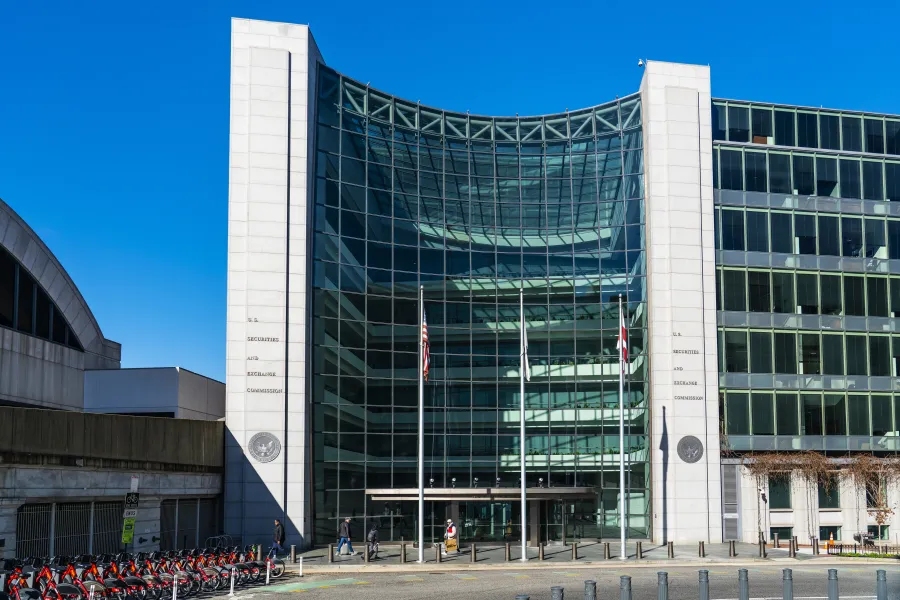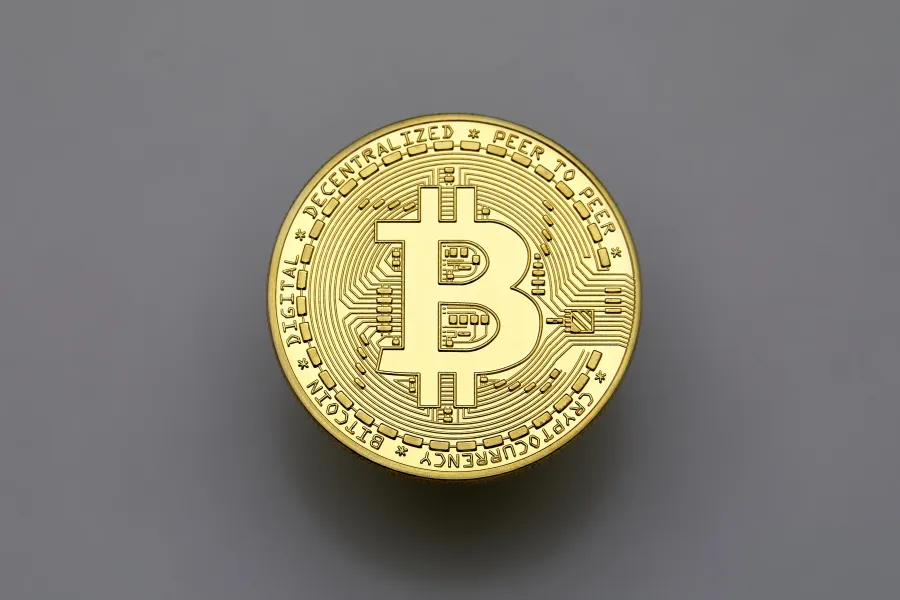Setting a Precedent: Uniswap gets sued
This week, our blockchain experts assessed the following topics:
- Setting a Precedent: Uniswap gets sued
- Entering the final chapter: Ethereum Merge delayed
- Innovation is happening on Bitcoin as well
- Crypto: Touch with the real world is needed
Our bi-weekly Crypto Industry Report provides you with valuable information on the global crypto industry – picked and analysed by our blockchain experts.
Setting a Precedent: Uniswap gets sued
For the first time in its history, decentralised exchange (DEX) protocol Uniswap is faced with a class-action lawsuit. Initiated by an individual called Nessa Risely, who lost a lot of money using crypto’s most famous DEX, two U.S. law firms have joined the action and invited anyone that has lost money as well trading on Uniswap to join the class action lawsuit.
In particular, the Ethereum-based protocol is accused of failing to crack down on fraudulent token projects that scammed various investors out of their money. While there’s no denying the fact that such projects were indeed listed on Uniswap for trading, it hardly can be blamed on Uniswap. As a decentralised exchange, the protocol comprises permissionless smart contacts anyone can use. This means that all sorts of tokens can be launched on Uniswap and the protocol cannot do anything about it – other than controlling its front-end website only.
It will be interesting to see how this lawsuit develops. After all, Uniswap already did restrict access to synthetic stock tokens on its own website. So, from a regulatory point of view, the case could be made that the protocol is obliged to ban apparently fraudulent projects from its official front-end webpage.
Others oppose and make the argument that it is not the task of a neutral piece of code like Uniswap to enforce investor protection. Especially not with projects, whose’ scam potential is blatantly obvious as was the case with the projects that led to the lawsuit.
Entering the final chapter: Ethereum Merge delayed
Ethereum’s move to Proof of Stake has been one of the crypto industry’s most highly anticipated events in the last few weeks. Only just a few days ago, the search queries for “Ethereum Merge” hit a new all-time high. As a matter of fact, the buzz around Ethereum 2.0 has been increasing as of late.
But the euphoria has just received its obligatory damper. The Ethereum merge – a key part of Ethereum’s transition to the Ethereum 2.0 Proof of Stake system – is being delayed once more. According to leading developers working on the transition, the merge, which was originally planned to happen in Q2 of this year is pushed into the future another few months.
While critics are quick to ridicule yet another delay, others point out that the June 2022 date was never announced by Ethereum developers in the first place. They also highlight the fact that decentralised scaling takes time and work and shall be finalised with utmost care. After all, Ethereum is a working system with billions of U.S. dollars at stake, which is why the transition needs to be absolutely bullet-proof.
Developers also want to make sure everything works out well since many believe that Ethereum 2.0 will usher in a new era on different fronts: Not only shall the new system lay to rest energy usage concerns. If you want to believe a recent Bloomberg research piece, staked ether post-merge might yield up to 9%. While the real yield might be lower, with the merge ether will still turn into one of the few liquid assets offering positive real yields – a reality that traditional asset managers won’t be able to ignore. And last but not least, ether issuance will drop significantly since today’s Proof of Work block reward of two ether being issued every 15 seconds will be no more.
Innovation is happening on Bitcoin as well
Ever since the emergence of smart contract platforms, Bitcoin has been accused of not being able to keep pace with the innovation happening on them. Critics mainly point to the fact that Bitcoin’s base layer is Turing-incomplete and therefore lacks the expressiveness potential of other blockchains.
Listening to Bitcoin developers, this is a fate that has been intentionally chosen. Bitcoin’s base layer is purposely being designed in a conservative and thus most secure manner. But this doesn’t stop innovation from happening on and around Bitcoin. As some community members go out of their way to prove, innovations are actually happening left and right.
One of the last base-layer innovations was the implementation of Taproot. With it, the size of complex transactions in Bitcoin has been reduced increasing scalability. At the same time, privacy was improved for these transactions. While Taproot has not brought fully expressive smart contracts, the upgrade has made a new protocol called Taro possible. This protocol leverages Taproot as well as the Lightning Network, another second-layer protocol that was originally enabled through the SegWit update on Bitcoin’s base layer back in 2017. With Taro, the goal is to bring multi-asset tokenisation to the Bitcoin blockchain.
As this newly open-source map shows, innovations in the Bitcoin technology stack abound. Be it on the protocol side, the mining side, or the privacy side – Bitcoin-focused developers are very much in the process of developing Bitcoin further. Most importantly, this development is giving rise to a multi-layered Bitcoin-based financial system.
Crypto: Touch with the real world is needed
Cryptocurrency ecosystems have long been accused of representing too much of a self-referential phenomenon. Especially in DeFi, investors and traders are repetitively yield-farming one token just to deploy this very token in another yield-farming opportunity, thereby hoping from protocol to protocol in an attempt to yield-farm for the sake of yield-farming only, so the argument goes.
As a matter of fact, there’s something to this argument. To gain long-term sustainability, the crypto industry has to break out of this circularity. Real-world economies need to be built around different types of crypto assets. This way real-world use cases are made possible as these crypto assets are being built into the economic and social fabric of societies.
This is where true pioneers come into play. With the acceptance of Bitcoin as legal tender, El Salvador has embarked on a mission to integrate Bitcoin into a real-world economy. Just recently, the special economic zone called Prospera on the Honduran island of Roatan has followed suit by declaring Bitcoin legal tender too.
However, the true domino effect that some expected has not yet materialised. The autonomous Portuguese region by the name of Madeira that was touted to accept Bitcoin as legal tender has not officially done so and the announcement of a Mexican senator to propose a Bitcoin legal tender law actually turned into a bill that calls for a central bank digital currency to be legal tender in Mexico. At the same time, El Salvador’s Bitcoin bond offering has currently been stalled due to traditional investors getting cold feet with Bitcoin’s price drop.
Nevertheless, things are still moving. A South-Pacific island in the jurisdictions of Vanuatu is aiming to become the first real-world crypto-economy running exclusively on cryptocurrencies and blockchain technologies. So much so that the island – called Satoshi Island – plans to launch non-fungible property tokens (NFPT) that will entitle its owners to a piece of the island. Similarly exciting are the plans of CabinDAO, which plans to build a decentralised internet-first city-state through various city nodes. In the first city node, two buildings already exist in the U.S. state of Texas. More hardware nodes will follow that will be governed through a software architecture in the form of a DAO.
Share post

Related Posts

To be continued: SEC pushes back at Coinbase
SEC pushes back against Coinbase's claim of no regulatory jurisdiction, stating the crypto exchange knowingly violated securities laws. Meanwhile, Gemini, owned by the Winklevoss twins, files a lawsuit against Digital Currency Group and CEO Barry Silbert alleging fraud and deception following the collapse of a lending venture. The Bank for International Settlements survey reveals that 93% of central banks are working on Central Bank Digital Currencies (CBDCs) which are seen as potential geopolitical policy tools and a challenge to the dollar's dominance. The race for a Bitcoin ETF intensifies, with BlackRock refiling its application featuring Coinbase as the market surveillance partner, as the Grayscale Bitcoin Trust's discount to net asset value narrows, potentially indicating the transformation into a proper ETF.

BlackRock fever: The ETF filing spree and institutional appetite
BlackRock filed for a Bitcoin ETF with the SEC, inspiring similar applications from firms like WisdomTree, Invesco, and Fidelity, and boosting Bitcoin's value. Traditional finance institutions such as Fidelity and Nasdaq are showing increased interest in crypto, with moves towards exchange and custody services. The defunct crypto exchange FTX, under new CEO John Ray III, is planning a potential revival after recovering significant assets. Meanwhile, the IMF is developing a global CBDC platform for cross-border transactions and DAI, a major stablecoin, is diversifying its backing from USDC to include real-world assets.

SWIFT explores blockchain interoperability
SWIFT has partnered with Chainlink to experiment with leveraging its infrastructure for transferring tokenized value across blockchain networks. The trials will address interoperability, regulatory challenges, and operational drawbacks for financial institutions in a blockchain environment. Chainlink will provide connectivity between private and public blockchains. SWIFT's findings will be published later this year.

China wants an Internet 3.0, while Hong Kong gears up for crypto trading launch
China is striving for advancement in Internet 3.0 technologies, with Beijing's white paper outlining plans to invest in the development of the metaverse and Web3 tech such as non-fungible tokens, but not cryptocurrencies due to the country's previous ban. Meanwhile, Hong Kong is launching its new crypto trading regulations, allowing retail investors to participate from June 1, 2023, with exchanges like Huobi Hong Kong beginning to offer spot trading to retail and institutional clients. Furthermore, the Cybersecurity and Technology Crime Bureau of the Hong Kong Police Force is launching a metaverse platform, 'CyberDefender', to educate the public about potential threats and crime prevention in the metaverse.

BRC-20: Innovating on Bitcoin is the new cool
A new Bitcoin “token standard” called BRC-20 is the hottest thing right now in the crypto space. It was introduced in March 2023 by a pseudonymous person called Domo. Bitcoin Request for Comment 20 (BRC-20) is an experiment that brings fungible tokens to the Bitcoin blockchain using the Ordinals protocol. Ordinals rely on ordinal theory, enabling the identification and tracking of individual satoshis within Bitcoin's existing supply, while also allowing them to be inscribed (associated) with data. Through this technique, satoshis (sats) are given ordinal numbers starting with zero. Anyone can add a script file to a sat to create and transfer a BRC-20 token on the Bitcoin blockchain. BRC-20 tokens are created using three functions: deploy, mint, and transfer.

US versus EU: Giants fighting for regulatory clarity
It is official now: The European Parliament voted overwhelmingly in favour of Markets in Crypto Assets (MiCA), legislation that will guide the crypto sector in all 27 European Union member states. 517 parliament members voted for it, while 38 voted against it. This approval makes Europe the first continent with comprehensive rules for cryptocurrencies. Also, it means that all EU member states will have unified crypto regulations. So, if a crypto business is approved in one EU member country, it could easily expand operations to another member state. The EU’s milestone was lauded by Binance as well as Kraken and Coinbase.

Ethereum: Another milestone reached with the Shanghai Update
On April 12, 2023, Ethereum successfully executed the planned Shanghai update also known as Shapella. The upgrade allows validators to unstake their staked ETH and withdraw their rewards, as well as staked ether if chosen. Now that another level of uncertainty has waned for the biggest smart contract blockchain, this new feature could attract more investors to stake their ether.

CFTC versus Binance:
Clash of the titans
The world’s leading crypto exchange by volume, Binance, alongside its CEO, Changpeng Zhao, and ex-Chief Compliance Officer, Samuel Lim, are being sued by the US Commodity Futures Trading Commission (CFTC).

Stablecoin USDC briefly lost its
peg. What do we learn from this?
One of the top stablecoins by market cap, USD Coin (USDC), de-pegged briefly from the US dollar on March 11 following the collapse of Silicon Valley Bank (SVB). Circle, the stablecoin’s issuer, held $3.3 billion in USDC reserves with the bank, which caused panic as investors rushed to withdraw their funds, assuming USDC could implode because of insufficient backing. However, the amount represented less than 8% of the stablecoin’s reserves.

Ethereum Shanghai upgrade pushed to April: Will there be too much selling pressure?
Ethereum stakers have been eagerly awaiting the Shanghai upgrade, which will enable them to withdraw their staked ether. Stakers’ funds have been locked since Ethereum introduced the proof-of-stake Beacon Chain in December 2020. The upgrade was originally slated to take place sometime in March but was pushed by about two weeks to April during a recent execution layer meeting.